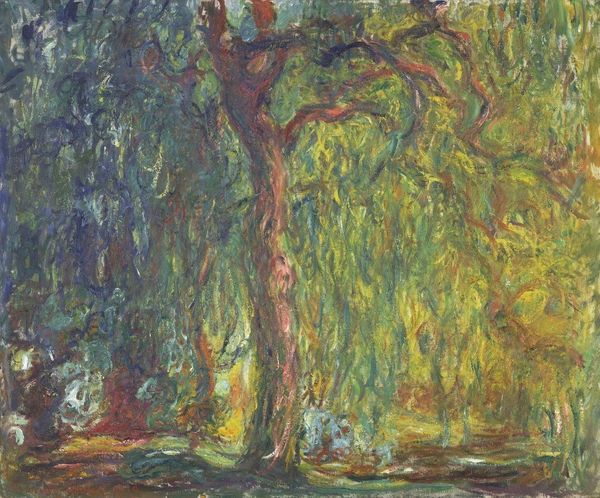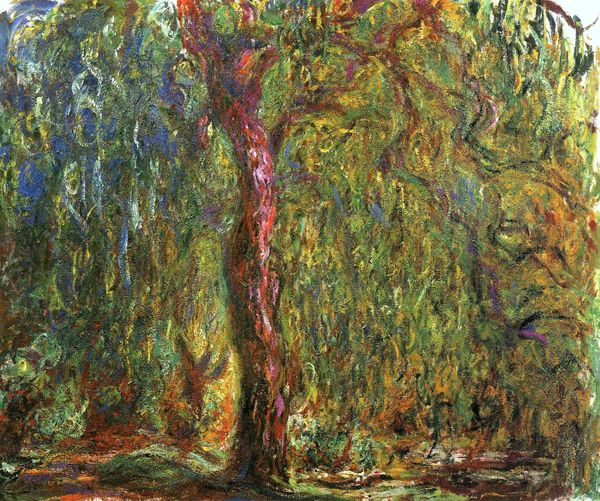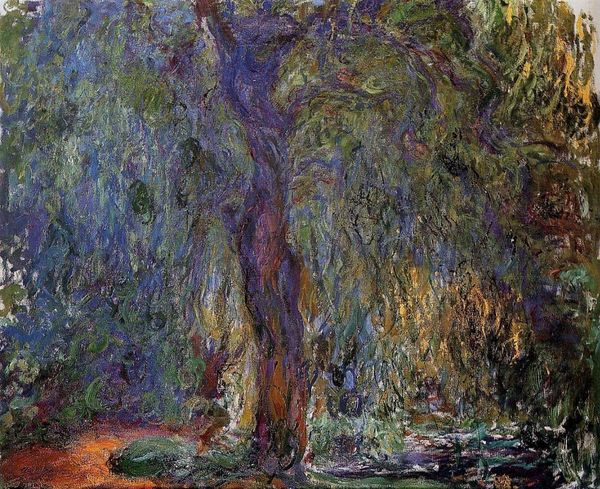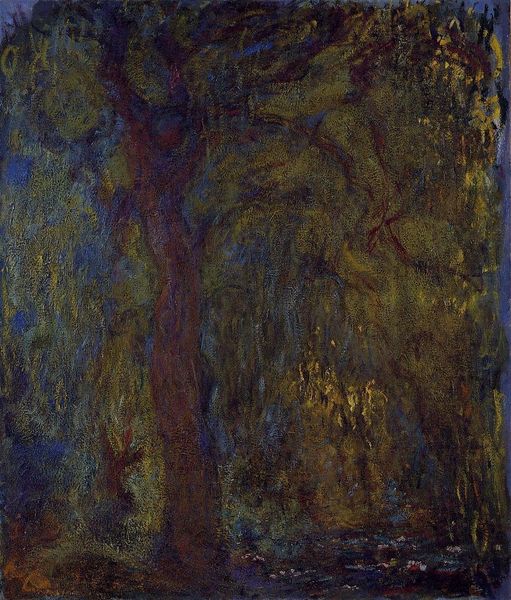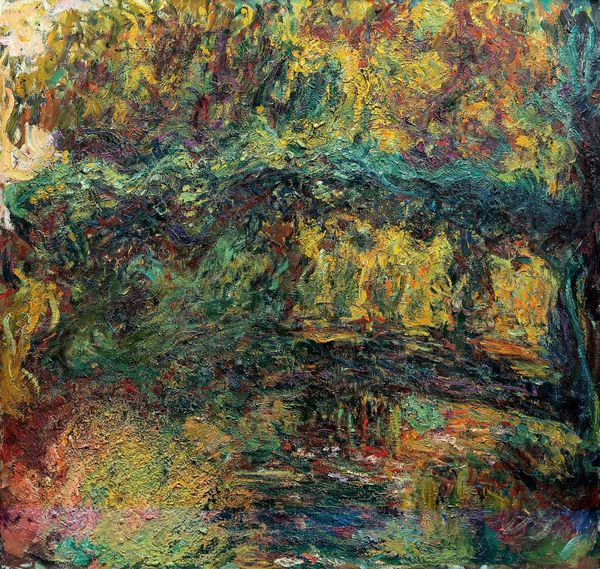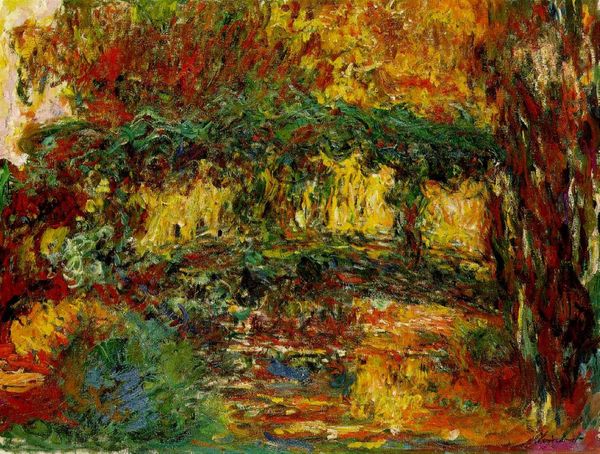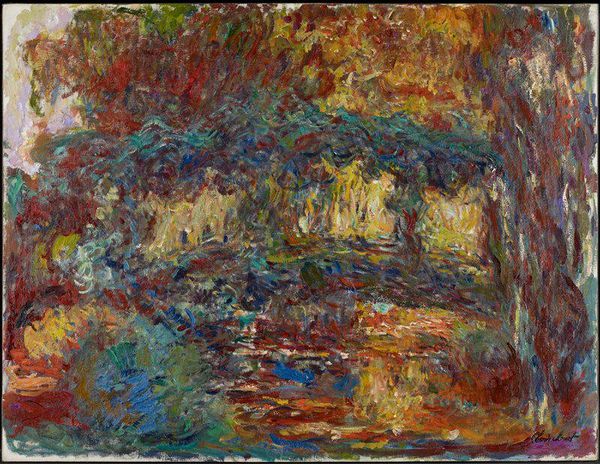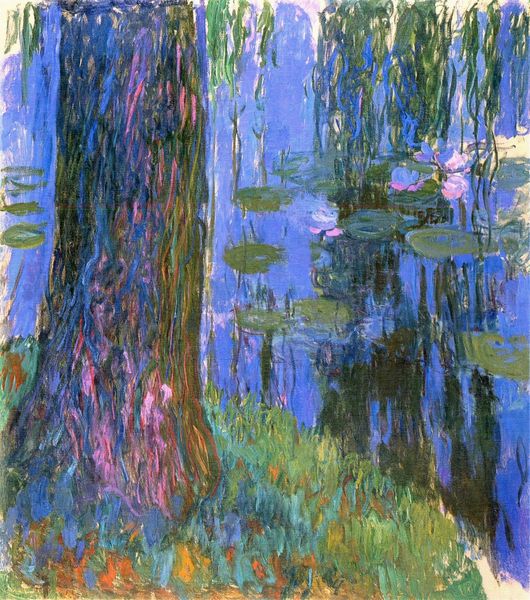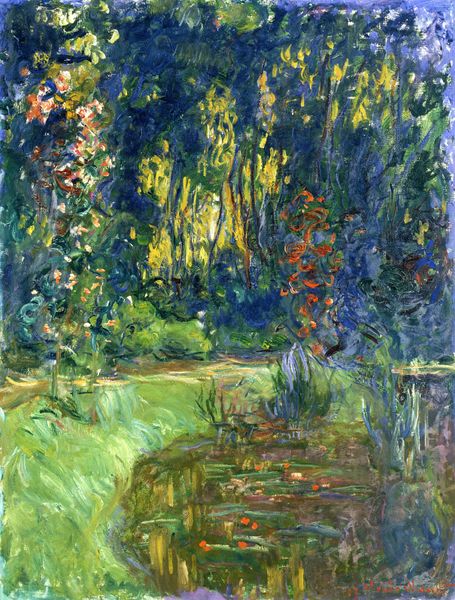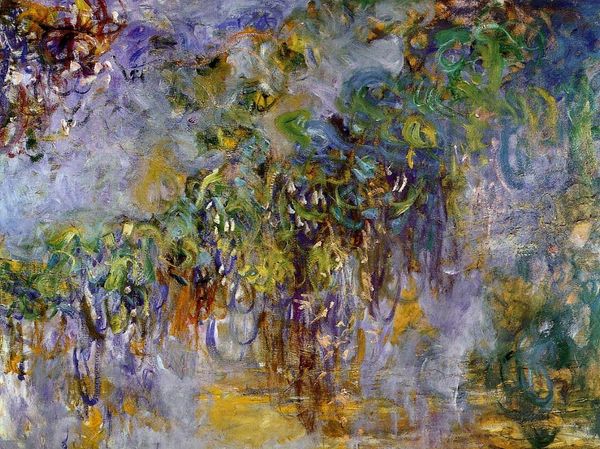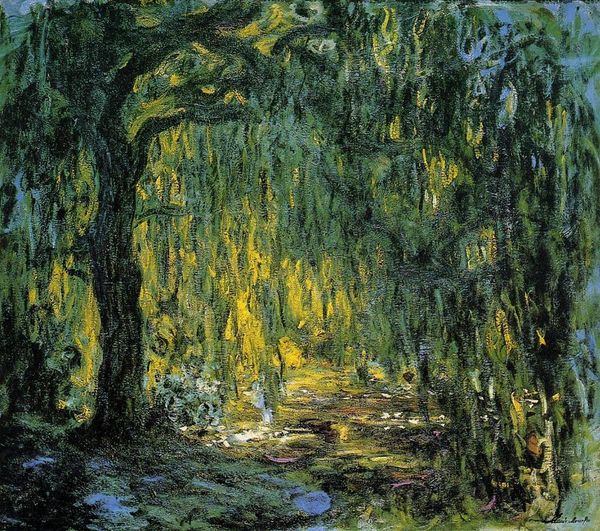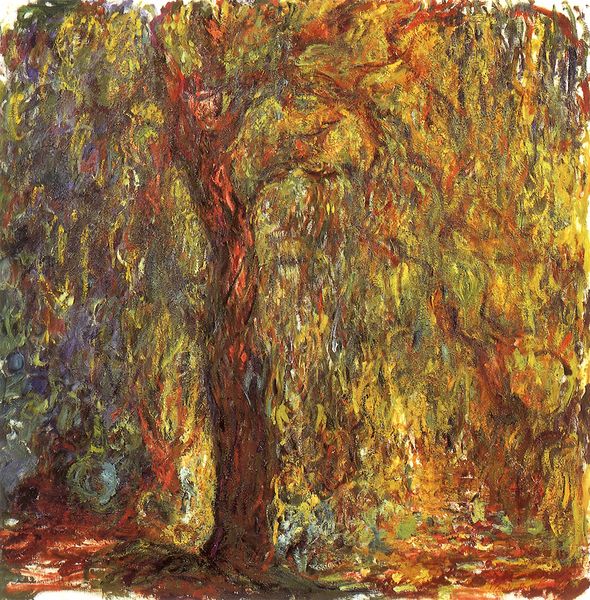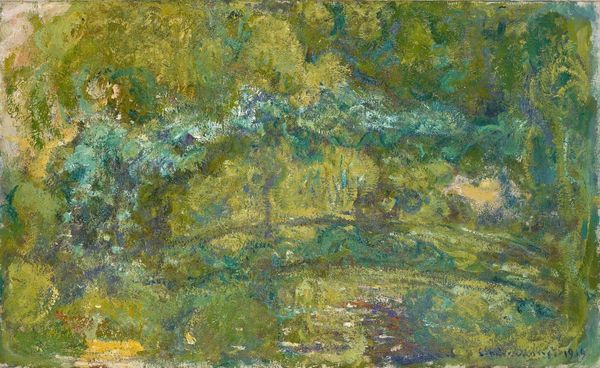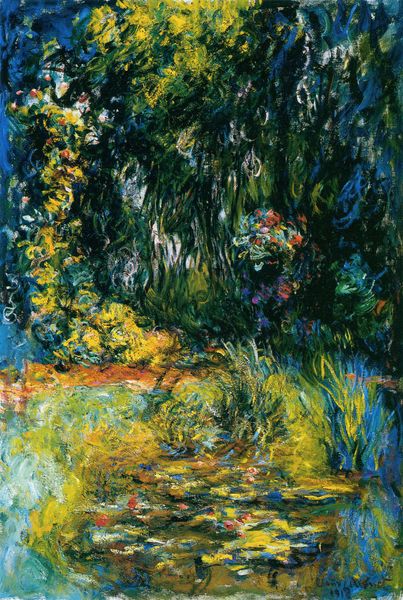
Copyright: Public domain
Editor: This is Claude Monet's "Weeping Willow," painted in 1918. The strokes of oil paint create such a fluid sense of movement. What do you see in this piece? Curator: The weeping willow motif holds immense historical and social weight, especially painted in 1918. World War I was raging, and France, Monet’s home, was deeply scarred. Consider the willow itself, a symbol of mourning and loss across many cultures. How do you think Monet's choice of subject might relate to the broader context of trauma and grief in that era? Editor: That’s a perspective I hadn’t considered. I focused on the beautiful brushwork. Are you suggesting that the beauty is almost secondary to the historical significance? Curator: Not secondary, but inextricably linked. Monet painted these willows at Giverny, in his own garden; however, it would have been impossible for the Great War raging nearby to be absent. Do you think Monet used his art as an escape, or rather to speak of a devastated generation in his Post-Impressionistic pictorial language? Editor: Perhaps both? The swirling colors almost feel like a cry, yet the garden setting offers some sense of peace. This definitely makes me consider how personal experiences intersect with broader socio-political realities. Curator: Exactly! And this is where art history truly sings - by understanding art not in isolation, but as part of our human story. It holds an uncanny place in resistance and healing. Editor: I’ll never look at Impressionism the same way again. I really see it as a vessel for both beauty and history now.
Comments
No comments
Be the first to comment and join the conversation on the ultimate creative platform.
